As we approach the end of 2019 and prepare for 2020 — surely destined to be another interesting year in the world of watches — we take a look back at some of the most noteworthy timepieces that came out this year, in various popular categories. Today, we look at 10 watches from 2019 that offered interesting takes on that classical mainstay of high horology, the tourbillon.
Arnold & Son’s Time Pyramid takes its historical inspiration from the regulator clocks designed by the brand’s namesake, 18th Century English watchmaker John Arnold. It’s equipped with the skeletonized Caliber A&S8615, whose pyramid-shaped tourbillon appears to float between two sapphire crystals. The movement is built on three levels, with its tourbillon and two power-reserve indicators (for the watch’s impressive 90-hour running autonomy) superposed by a sapphire disk for the hour and a rhodium-plated ring for the minutes. Manually wound by a 6 o’clock crown, its gear train runs in a linear arrangement connecting the two barrels at 6 o’clock to the tourbillon escapement at 12 o’clock, and its bridges are deigned in a manner that the balance wheel, the mainspring barrel, and the other wheels are all visible from the dial side. The Time Pyramid comes in a round 44.6-mm-diameter case made of either 18k rose gold (pictured) or stainless steel, limited to 28 pieces each. Additional info and photos here.
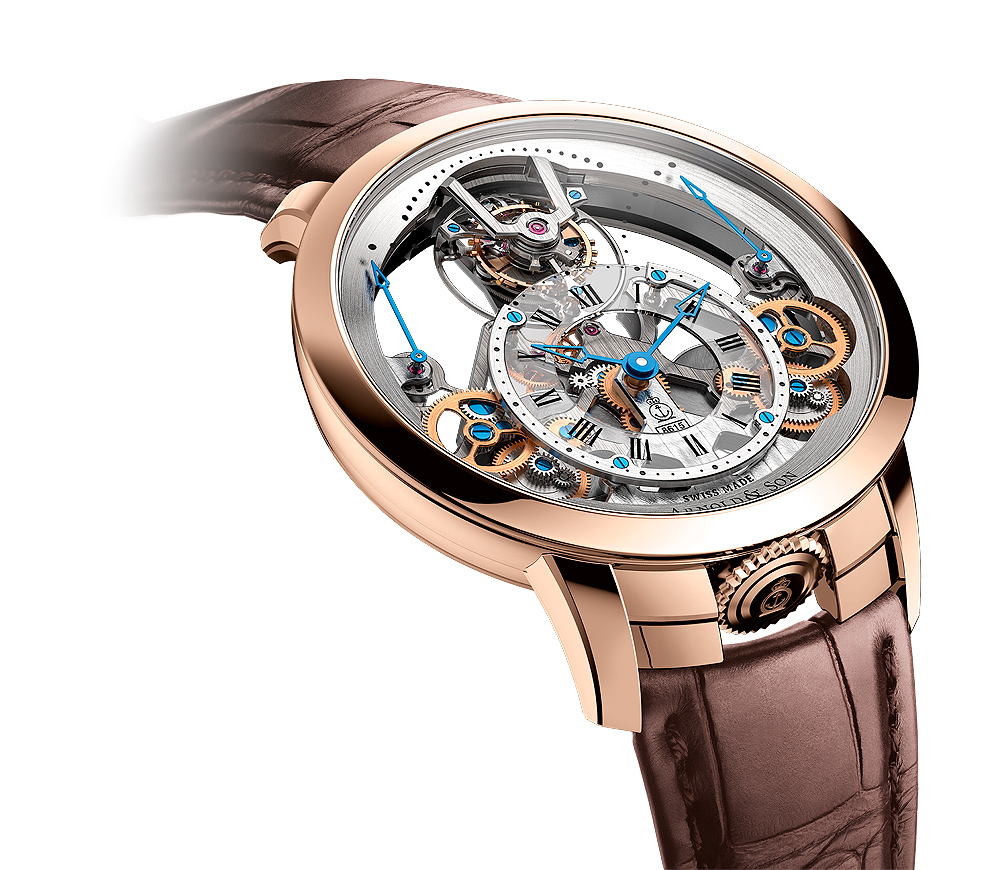
Bovet achieved new horological heights with the Récital 26 Brainstorm Chapter One, which combines a sapphire version of Bovet’s “writing desk” sloped case with an array of complications. Bovet’s patented, double-face flying tourbillon occupies a large aperture at 6 o’clock and serves as the seconds display. The hours and minutes, displayed by two golden hands, are positioned off center below 12 o’clock. Just above these hands is a three-dimensional, hemispherical moon-phase indicator, whose dome follows the curvature of the dial and whose surfaces are engraved and filled with Super-LumiNova on its lower sections. Two circular apertures reveal the current moon-phase on two circular aventurine glass plates for a strikingly realistic view of the moon in the starry sky. The big date display, whose sapphire units disk is in full view, appears in a circular window at 8 o’clock, and the power reserve – an astounding 10 days – is located at 4 o’clock. All these indicators are powered by the manual-wound manufacture Caliber 17D04-SMP. Click here for our report on the model from SIHH 2019.
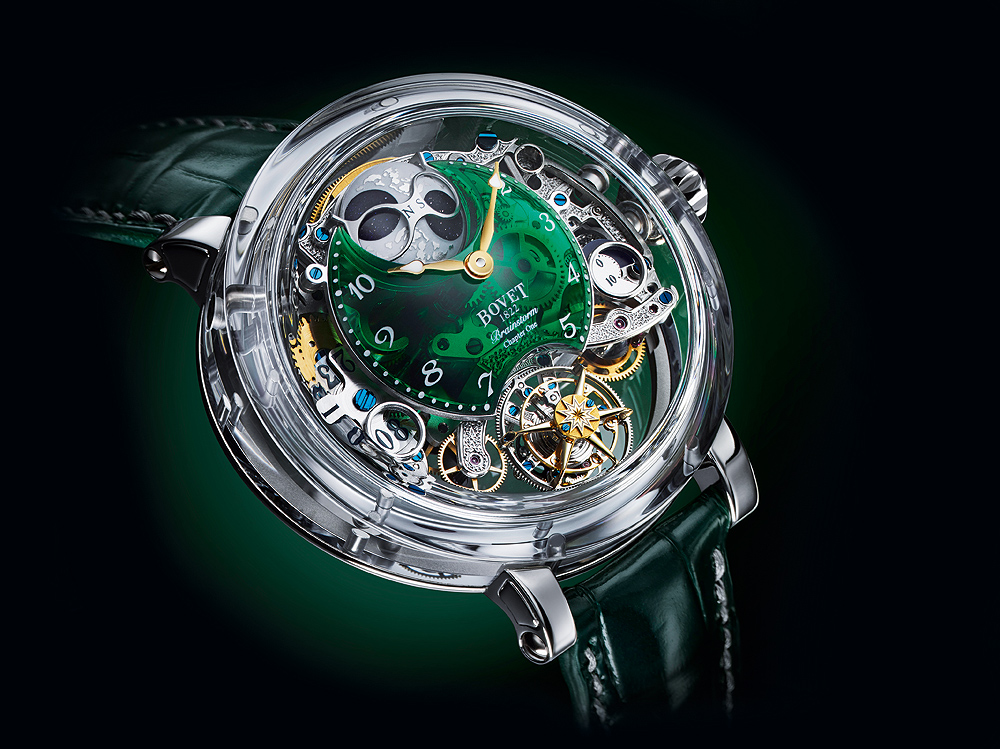
It was Abraham-Louis Breguet, founder of the Breguet watchmaking maison, who invented the tourbillon, and the modern-day brand that bears his name is, of course, a leader and innovator in the field of tourbillon-equipped timepieces. This year’s Breguet Classique Tourbillon Extra-Plat Squelette 5395 displays that savoir faire with its distinctive, skeletonized dial architecture. The watch — in rose gold or platinum — takes the extra-thin, tourbillon-equipped Caliber 581 — a movement used in the previous year’s Tourbillon Extra-Plat Automatique 5367 — and removes nearly 50 percent of its normal material construction. The gold plate and bridges have been hollowed out to display the mechanical anatomy of the movement, while clous de Paris hobnailing was applied to the remaining plates using a diamond-tipped guilloché procedure. At only 3 mm thick, Caliber 581 has a rotor positioned on its periphery in order to remain as svelte as possible while providing an unobstructed view of the parts while also offering 80 hours of power reserve from its high-energy (4 Hz) barrel. More photos of the watch can be seen here.
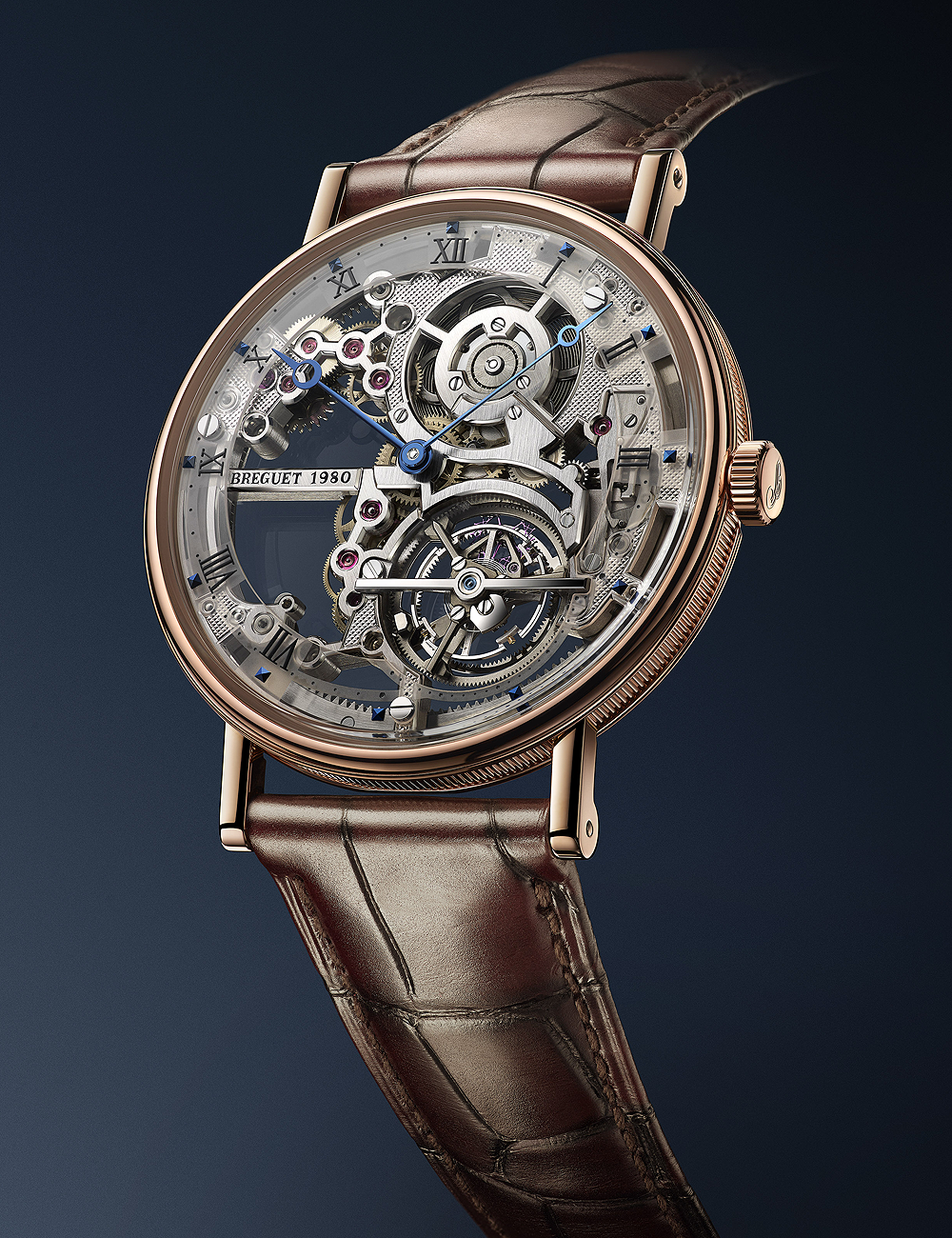
While it consistently wows jewelry mavens with its ladies’ pieces and reliably satisfies racing enthusiasts with its annual Mille Miglia releases, Chopard saves its biggest feats of horological derring-do for exclusive models in its L.U.C collection, named for the initials of founder Louis-Ulysse Chopard. This year’s chef d’oeuvre, the L.U.C Flying T Twin, both its first flying tourbillon watch and its first tourbillon watch with an automatic movement. Its movement, Caliber 96.24-L, features Chopard’s patented Twin Technology, in which two stacked mainspring barrels store a lengthy 65-hour power reserve; it’s also just 3.30 mm thick, allowing for a very slender 7.2 mm thickness for the 40-mm-diameter case, made of Chopard’s 18k “fairmined” gold. Along with the flying tourbillon’s cage, the gold, anthracite-gray-coated dial is also visually highlighted by a honeycomb-style, hand-applied guilloché motif in its center. More details and images can be found here.
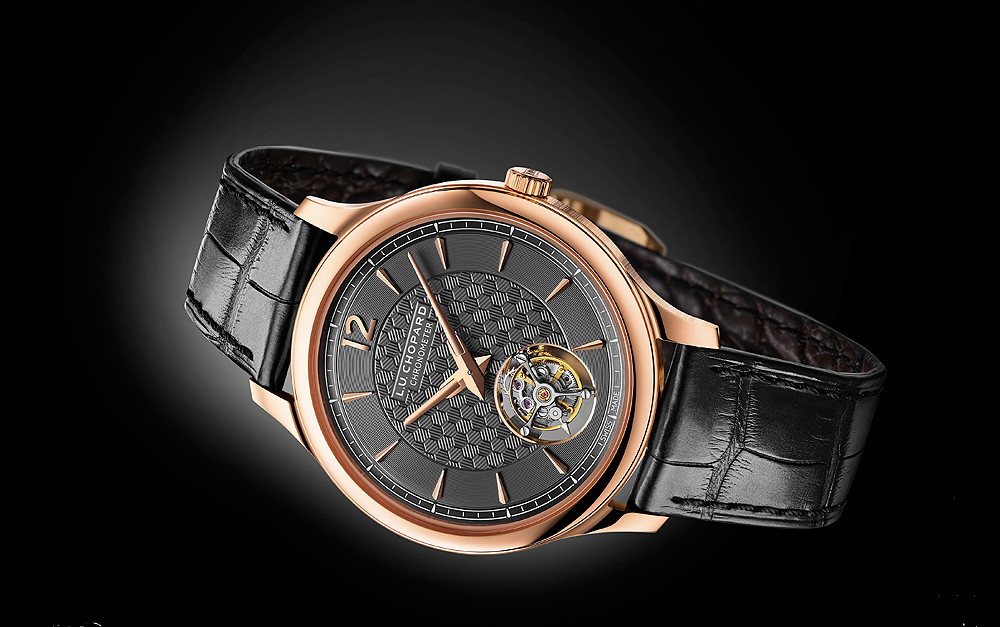
The F.P. Journe Tourbillon Souverain Vertical commemorates 20 years for one of Francois-Paul Journe’s most important horological innovations, the original Tourbillon Souverain. For this new 42-mm piece, Journe has developed a tourbillon whose vertical tourbillon cage, with remontoir d’égalité and deadbeat seconds, makes one revolution every 30 seconds rather than the more common one minute. In Journe’s own words, the benefit of this vertical orientation is so “ that the tourbillon’s functions remain constant whether the watch lies flat or is placed on its side, and the amplitude is subsequently the same, whether with a deployant clasp lying on the side or with an ardillon buckle lying flat.” The rose gold bridges that form the dial are decorated with clous de Paris guilloché; a grand feu enamel hour dial is placed at 3 o’clock, along with an 80-hour power reserve display at 12 o’clock, small seconds at 6 o’clock, and the remontoir d’égalité at 7 o’clock. For additional photos of both versions of the watch, click here.
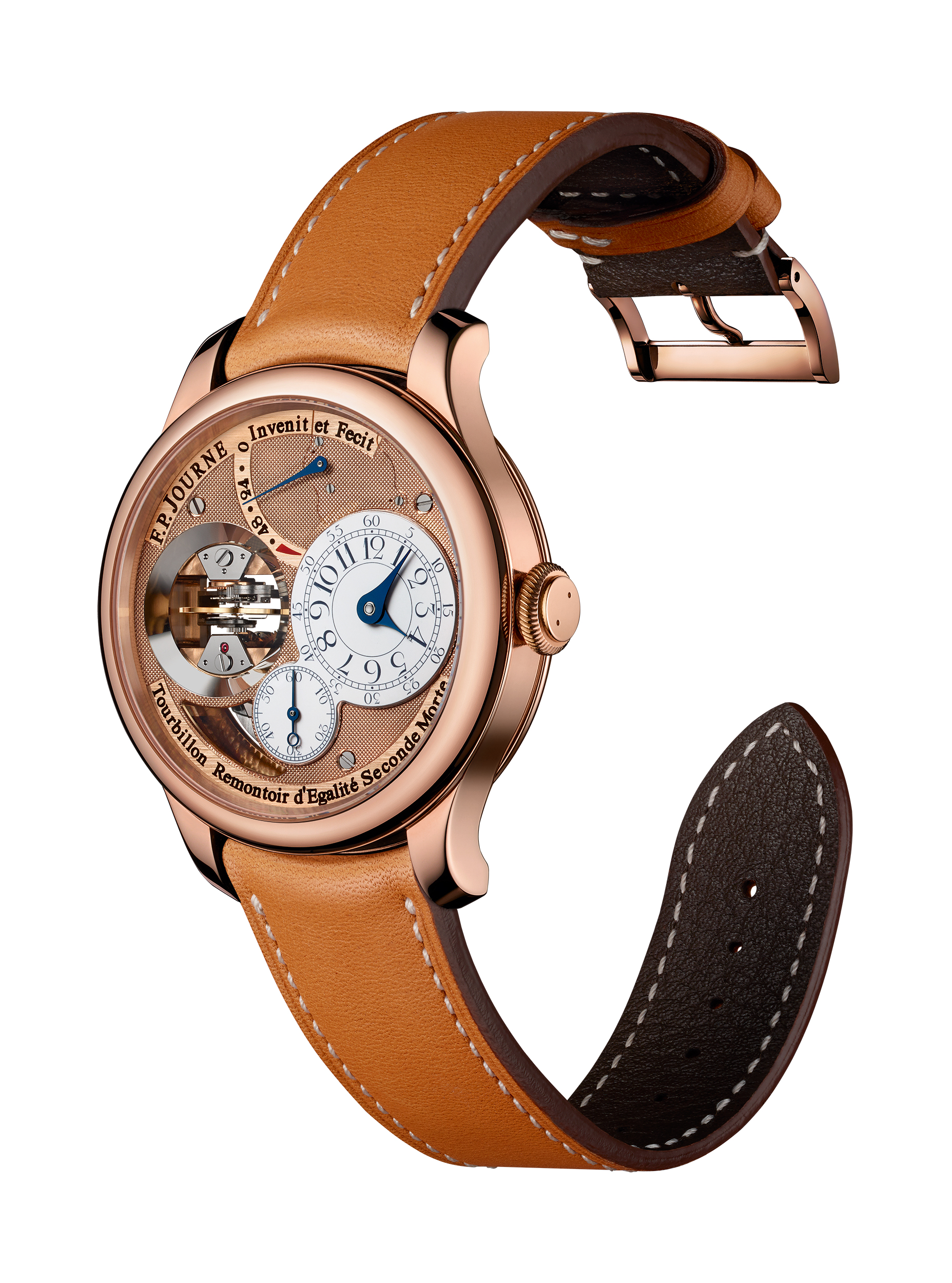
Greubel Forsey has long championed the cause of artisanal watchmaking in an industry that is increasingly turning to machines to do the work that was once done by expert craftsmen. To help preserve these age-old skills, founders Robert Greubel and Stephen Forsey teamed up with the likes of master watchmaker Philippe Dufour to launch the Naissance d’une Montre project with the aim of resurrecting the centuries-old tradition of hand craftsmanship. The haut-de-gamme brand now brings that philosophy to its product line with the Hand Made 1, a tourbillon-equipped time-only timepiece in which 95 percent of its parts, including the hairspring, are made exclusively with hand-operated tools. Each watch, housed in a 43.5-mm white gold case, requires an extraordinary 6,000 hours’ work (in man-hours, about three years). It features Greubel Forsey’s emblematic cutaway dial with frosted bridges, a small seconds subdial, and a tourbillon placed in the cutaway section. Click here to read about the amazing handcraftsmanship involved in the timepiece, of which Greubel Forsey says it will produce just two to three pieces per year.
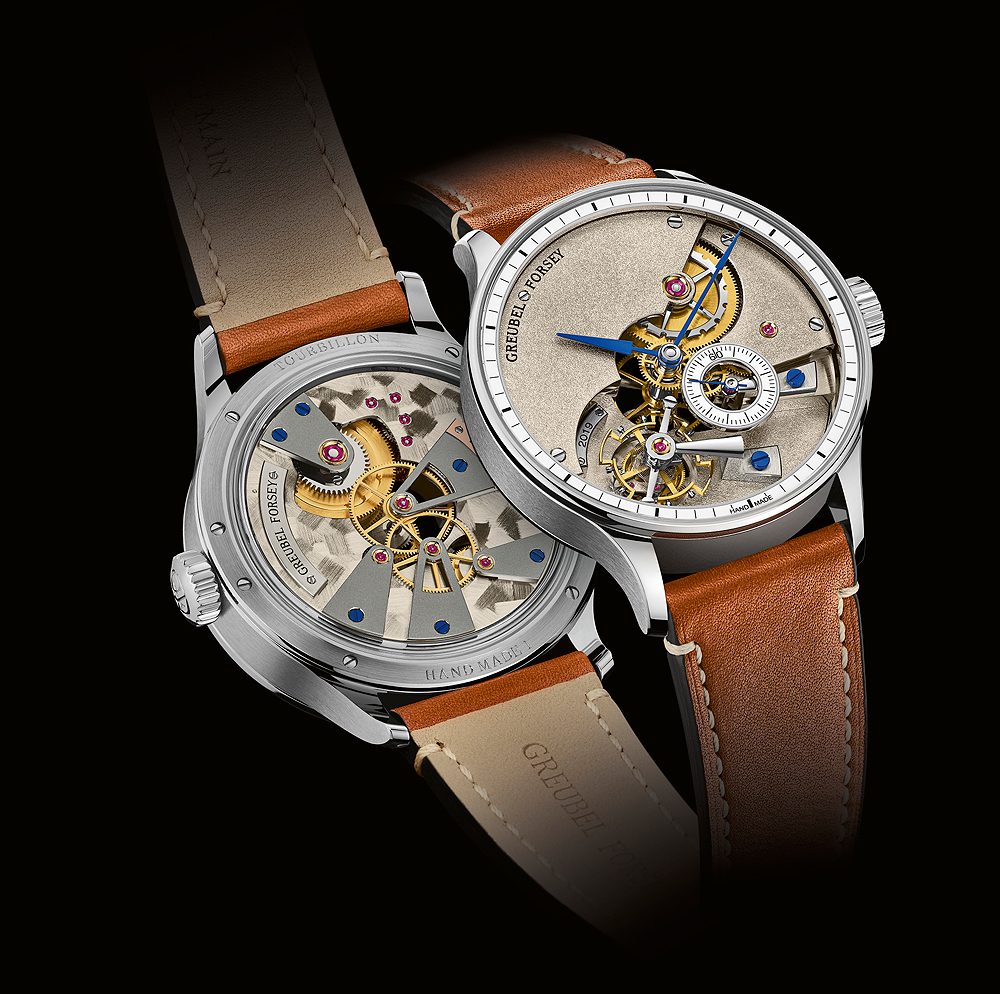
“Histoire de Tourbillon” translates roughly as “story of the tourbillon,” and master jeweler and watchmaker Harry Winston wrote a bold new chapter this year with the 10th piece in that prestigious series. The Histoire de Tourbillon 10 — 10 pieces in white gold, 10 in rose gold, and one unique piece in the brand’s proprietary Winstonium alloy — is the first series-produced wristwatch to include four tourbillon regulators. Arranged in perfectly symmetrical order at the four corners of the rectangular case (53.3 mm wide by 39.1 mm tall), the tourbillons each make a counterclockwise 36-second rotation and are connected by three differentials. The technical idea behind this arrangement is to unify the quartet of regulating mechanisms for an ideal offsetting of the effect of gravity on the movement. The dial providing a large, clear window into this mechanical tableau is itself something of a technical marvel, cut from a single piece of sapphire with a central hollow circle surrounded by a chapter ring with applied hour markers. Discover more details and all three case versions here.

Jaeger-LeCoultre added several striking blue-dialed timepieces to its Master collections at SIHH 2019, the most horologically ambitious of which is the Master Ultra Thin Tourbillon Enamel, limited to just 50 pieces and premiering both a new, self-winding, tourbillon-equipped, in-house movement and a redesigned date counter. The white gold case is 40 mm in diameter and 12.13 mm thick. The hand-guillochéd, blue enamel dial is dominated by a 12 o’clock subdial, with a 1-31 date scale indicated by a small hand, and a large tourbillon aperture at 6 o’clock. The well-balanced ensemble is complemented by slender Dauphine hour and minute hands and thin, faceted indices. Behind a sapphire caseback is the Jaeger-LeCoultre’s Caliber 978, a somewhat rare example of a self-winding tourbillon movement, “reconceived both technically and aesthetically,” in the brand’s words, with sunray finishing on the plates and a gold oscillating weight. You can see all three new blue-dialed Master models here.
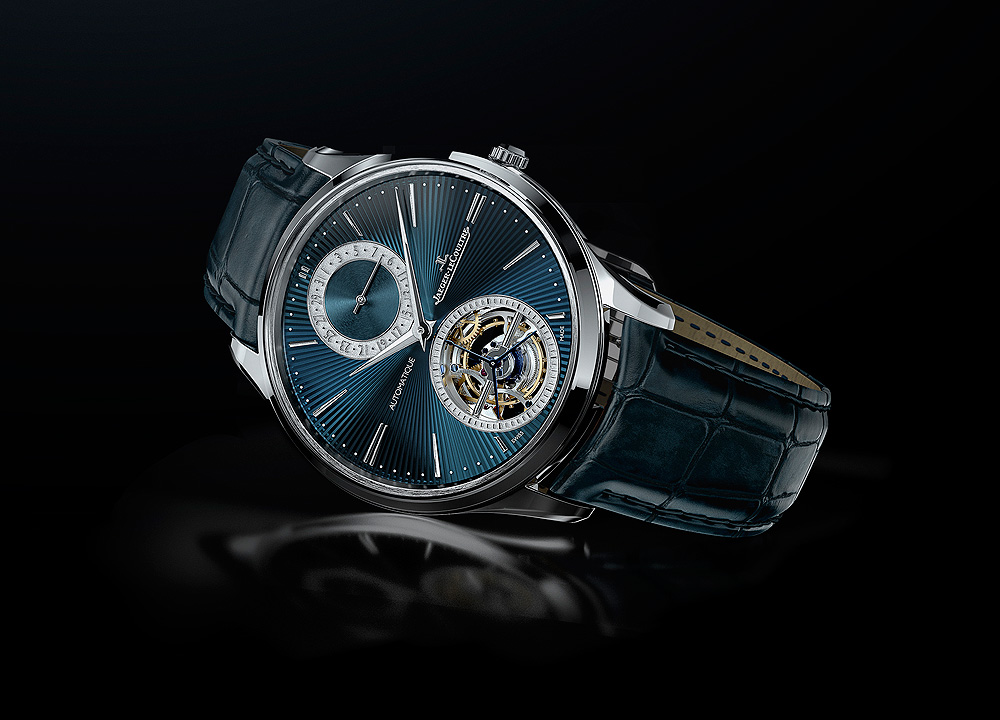
Not only does MB&F’s recently launched Legacy Machine Thunderdome feature a world-first, proprietary tourbillon device as both its technical and visual highlight; it also marks the first collaboration between renowned watchmakers Eric Coudray and Kari Voutilainen. Its so-called TriAx tourbillon mechanism, designed by Coudray, replaces the traditional system for multiple-axis tourbillons — which links one tourbillon cage with each rotating axis — with a three-axis, two-cage configuration along with a so-called Potter escapement with a fixed wheel that allows for higher rotational speed for all three cages. The revolutionary mechanism allows for maximum visibility of the tourbillon escapement’s beating heart, which is on full display under a large, domed sapphire crystal that gives the model its cinematic, sci-fi nickname. Voutilainen’s decorative genius is evident in the dial’s circular guilloché motif as well as on the signature, closely guarded finishing style applied to the movement’s ratchet wheels — a first for an MB&F watch. More details and close-up photos of the dynamic TriAx tourbillon mechanism, can be found here.
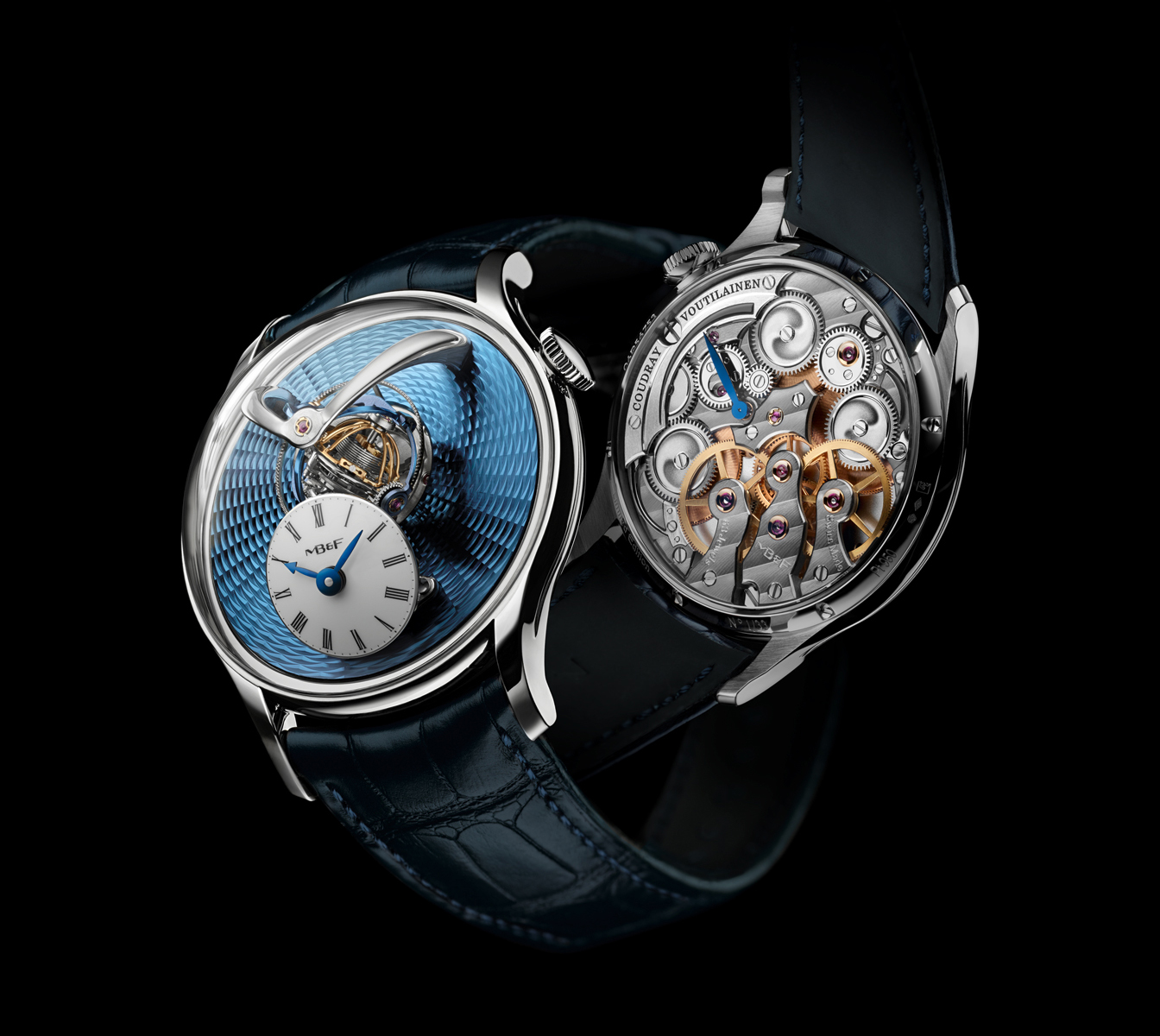
It’s a whirlwind in a web. The Arraw Spider-Man Tourbillon by RJ marks not only the iconoclastic watchmaker’s second collaboration with Marvel but also its first in-house movement, notable for its central tourbillon inspired by the arachnid hero and made entirely at RJ’s atelier on Lake Geneva. RJ also wanted the watch’s movement to have an extra-long power reserve — 150 hours, or more than six days — so its engineers placed the extra-large mainspring barrel in the center of the movement, where it spans nearly the entire expanse of the openworked dial. Made from grade 5 titanium, the tourbillon cage, placed directly above the centered barrel on the same axis, has an openworked design reminiscent of a spiderweb; it is flanked by two black eyes in the style of those on Spider-Man’s mask. The hours and minutes display on the watch is also decidedly unconventional, using a planetary gear system that orbits 360º around the tourbillon to tell the time on the periphery of the dial with two black ruthenium hands that mimic the legs of the spider emblem on the superhero’s costume. Click here for more on the watch and its technical feats.





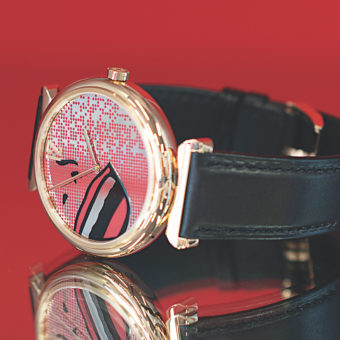

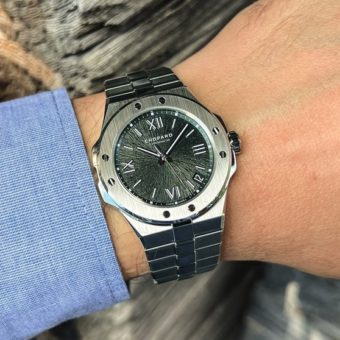
I was recently made aware of the tourbillion movent watch, and I am impressed by your article. Thank you, for revealing such beauty to me,. WmR88